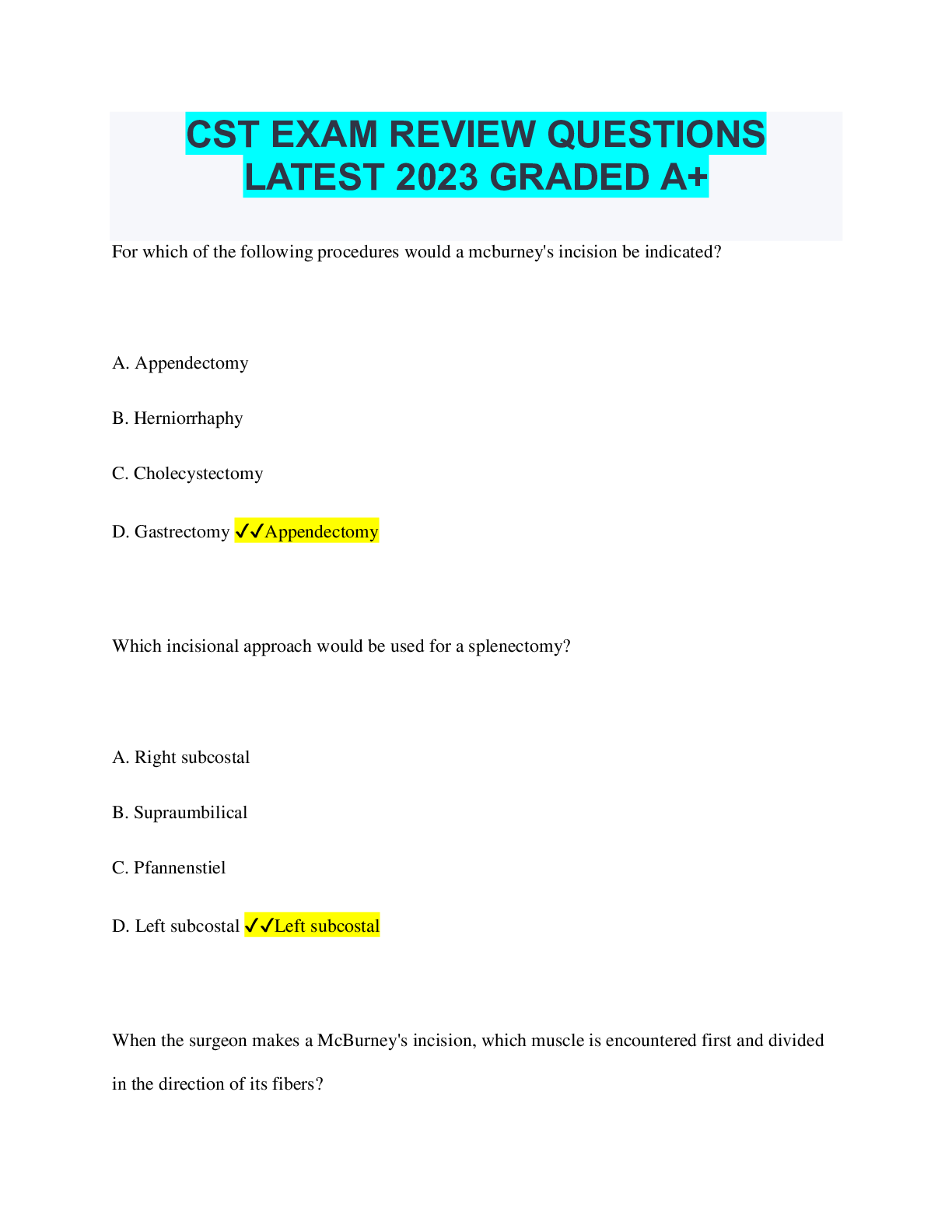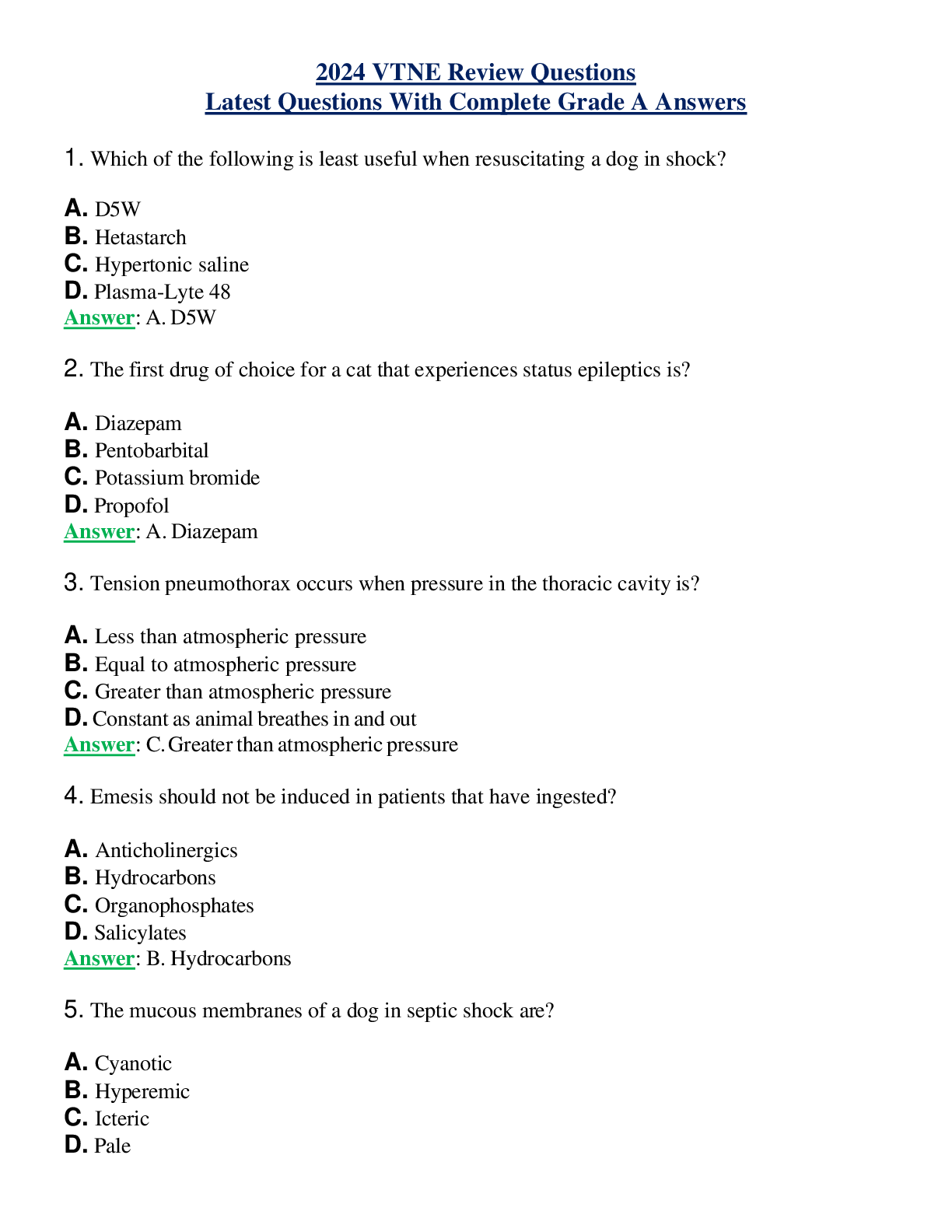Health Care > EXAM > Saunders Comprehensive Review Questions latest 2021 1801-1900 (All)
Saunders Comprehensive Review Questions latest 2021 1801-1900
Document Content and Description Below
When performing an assessment of a client’s skin, the nurse notes the presence of multiple straight and wavy threadlike lines beneath the skin and suspects the presence of scabies. Which of the foll... owing precautions will the nurse institute before completing the assessment of the client? 1. Don a mask and gloves 2. Put on a pair of gloves 3. Put on a gown and gloves 4. Don a mask and a gown Answer: 3 Rationale: The Centers for Disease Control and Prevention recommend the wearing of gowns and gloves for close contact with a person infested with scabies. Masks are not necessary. Transmission via clothing and other inanimate objects is uncommon. Scabies is usually transmitted from person to person by direct skin contact. All contacts that the client has had should be treated at the same time. Test-Taking Strategy: Consider the mode of transmission of scabies and use the process of elimination. Since scabies is transmitted by direct skin contact, eliminate options 1, 2, and 4. If you had difficulty with this question, review standard precautions and the transmission mode of scabies. Level of Cognitive Ability: Application Client Needs: Safe, Effective Care Environment Integrated Process: Nursing Process/Implementation Content Area: Fundamental Skills References: Christensen, B., & Kockrow, E. (2003). Adult health nursing (4th ed.). St. Louis: Mosby, pp. 83-84. Linton, A., & Maebius, N. (2003). Introduction to medical-surgical nursing (3rd ed.). Philadelphia: W.B. Saunders, p. 1031. 1802. A nurse has just been told by the physician that an order has been written to administer an iron injection to a client. The nurse anticipates giving the medication by which method? 1. Z-track 2. Subcutaneous using a ⅝-inch needle 3. Intramuscular using a 1-inch needle 4. Direct intravenous push after dilution Answer: 1 Rationale: The correct technique for administering parenteral iron is deep in the gluteal muscle using the Z-track technique, and usually a 1½-inch needle is used to administer the injection, depending on the size of the client. This method minimizes the possibility that the injection will stain the skin a dark color. The medication is not given by the subcutaneous route or by direct intravenous push. Test-Taking Strategy: Use principles of medication administration by the parenteral route and the process of elimination to answer the question. Eliminate option 4 because of the word “injection” in the question. From the remaining options, recalling that the issue with this medication is to avoid staining the skin will direct you to option 1. Review the procedure for the administration of an iron injection if you had difficulty with this question. Level of Cognitive Ability: Application Client Needs: Physiological Integrity Integrated Process: Nursing Process/Implementation Content Area: Fundamental Skills Reference: Perry, A., & Potter, P. (2004). Clinical nursing skills & techniques (5th ed.). St. Louis: Mosby, p. 528. 1803. A nurse is assisting in developing a plan of care for the client with acquired immunodeficiency syndrome (AIDS) who is experiencing night fever and night sweats. Which nursing intervention would the nurse suggest including in the plan of care to manage this symptom? 1. Keep the call bell within reach for the client 2. Administer a sedative at bedtime 3. Administer an antipyretic at bedtime 4. Provide a back rub and comfort measures before bedtime Answer: 3 Rationale: For clients with AIDS who experience night fever and night sweats, it is useful to offer the client an antipyretic prior to bedtime. It is also helpful to keep a change of bed linens and nightclothes nearby for use. The pillow should have a plastic cover, and a towel may be placed over the pillowcase if there is profuse diaphoresis. The client should have liquids at the bedside to drink. Options 1, 2, and 4 are important interventions but they are unrelated to the issue of fever and night sweats. Test-Taking Strategy: Focus on the issue of the question—night fever and night sweats. Options 1, 2, and 4 are helpful and important interventions but do not address the issue of the question. Since night fever and sweats occur serially, it is most helpful to give the antipyretic before sleep as a prophylactic measure. Review nursing measures for the client with AIDS if you had difficulty with [Show More]
Last updated: 2 years ago
Preview 1 out of 112 pages
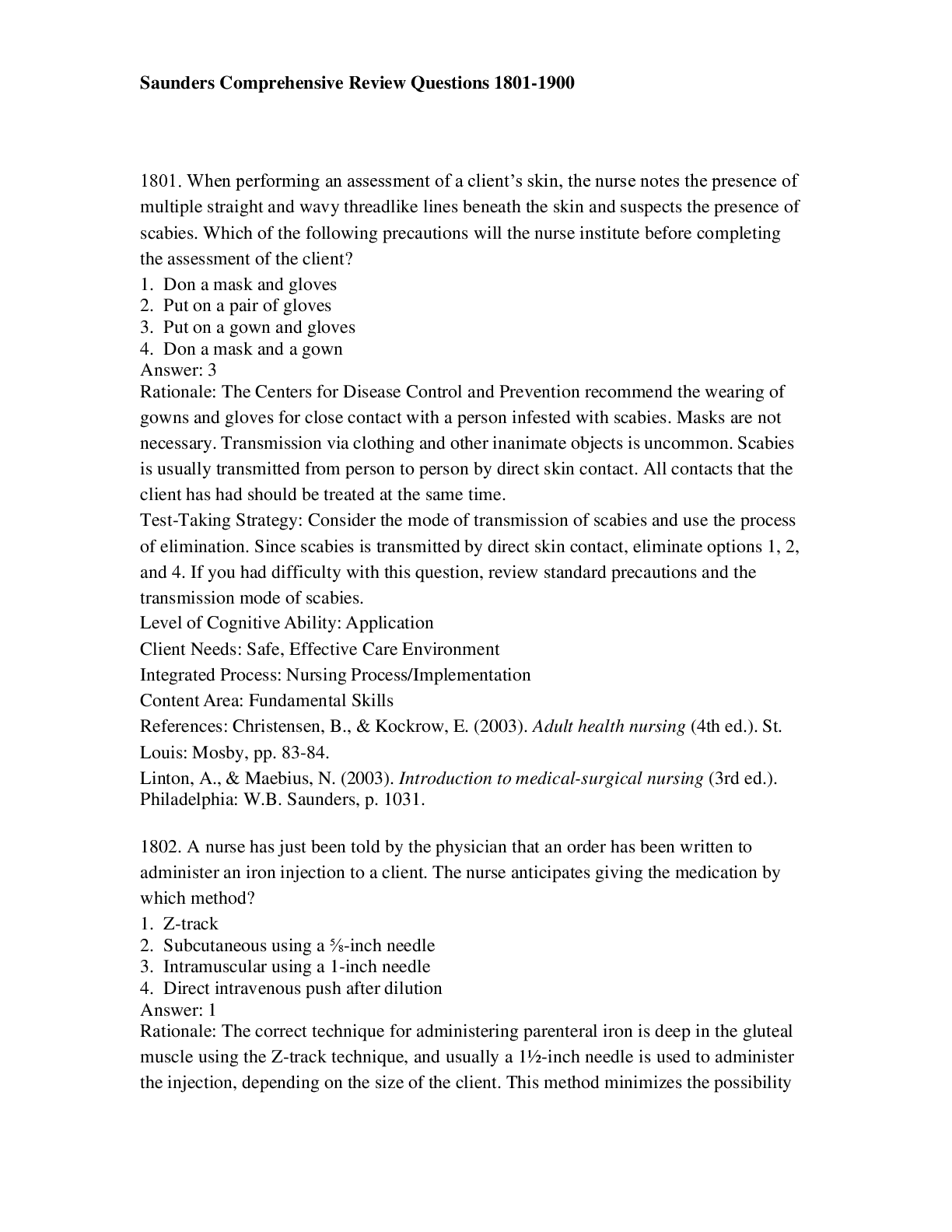
Buy this document to get the full access instantly
Instant Download Access after purchase
Buy NowInstant download
We Accept:

Reviews( 0 )
$12.00
Can't find what you want? Try our AI powered Search
Document information
Connected school, study & course
About the document
Uploaded On
Nov 27, 2021
Number of pages
112
Written in
Additional information
This document has been written for:
Uploaded
Nov 27, 2021
Downloads
0
Views
94

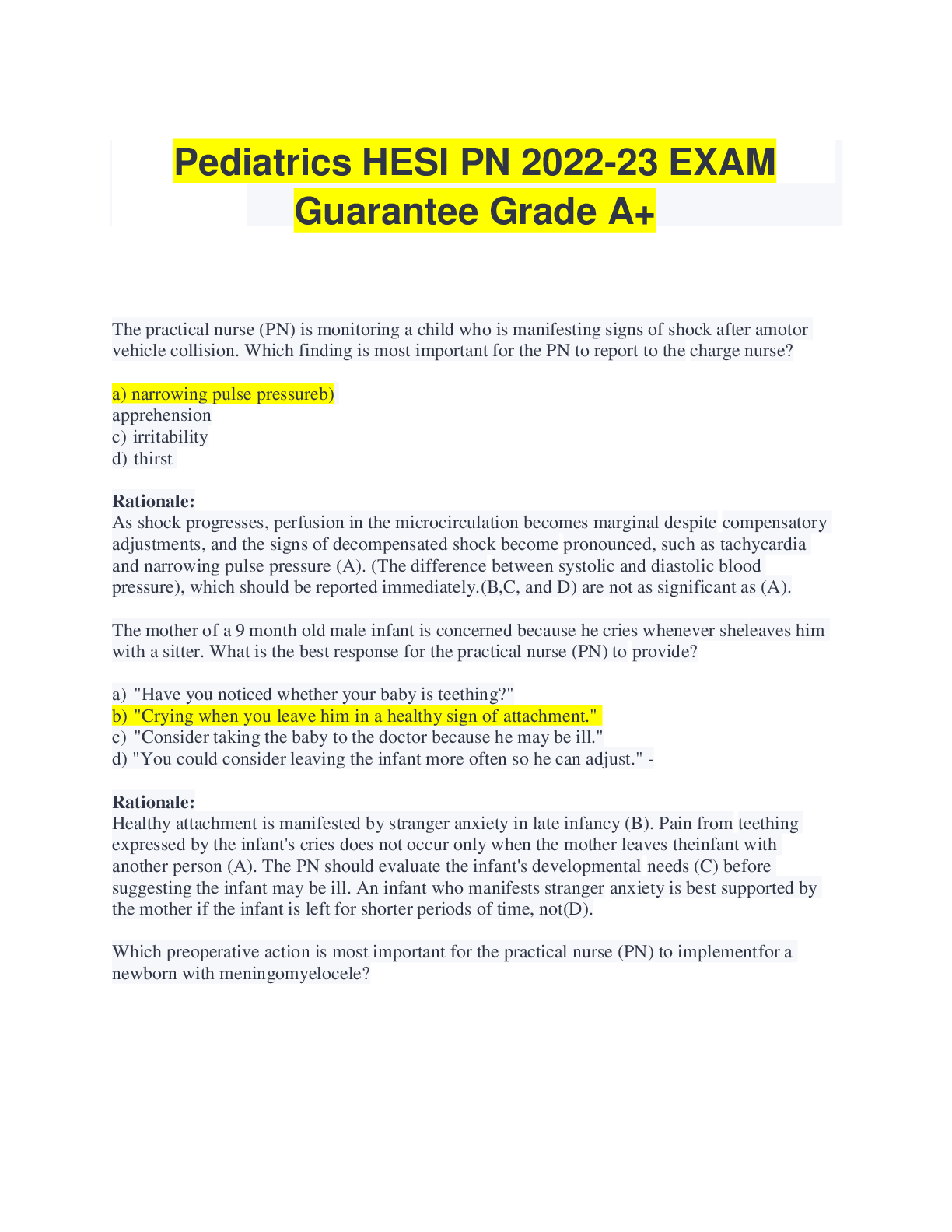
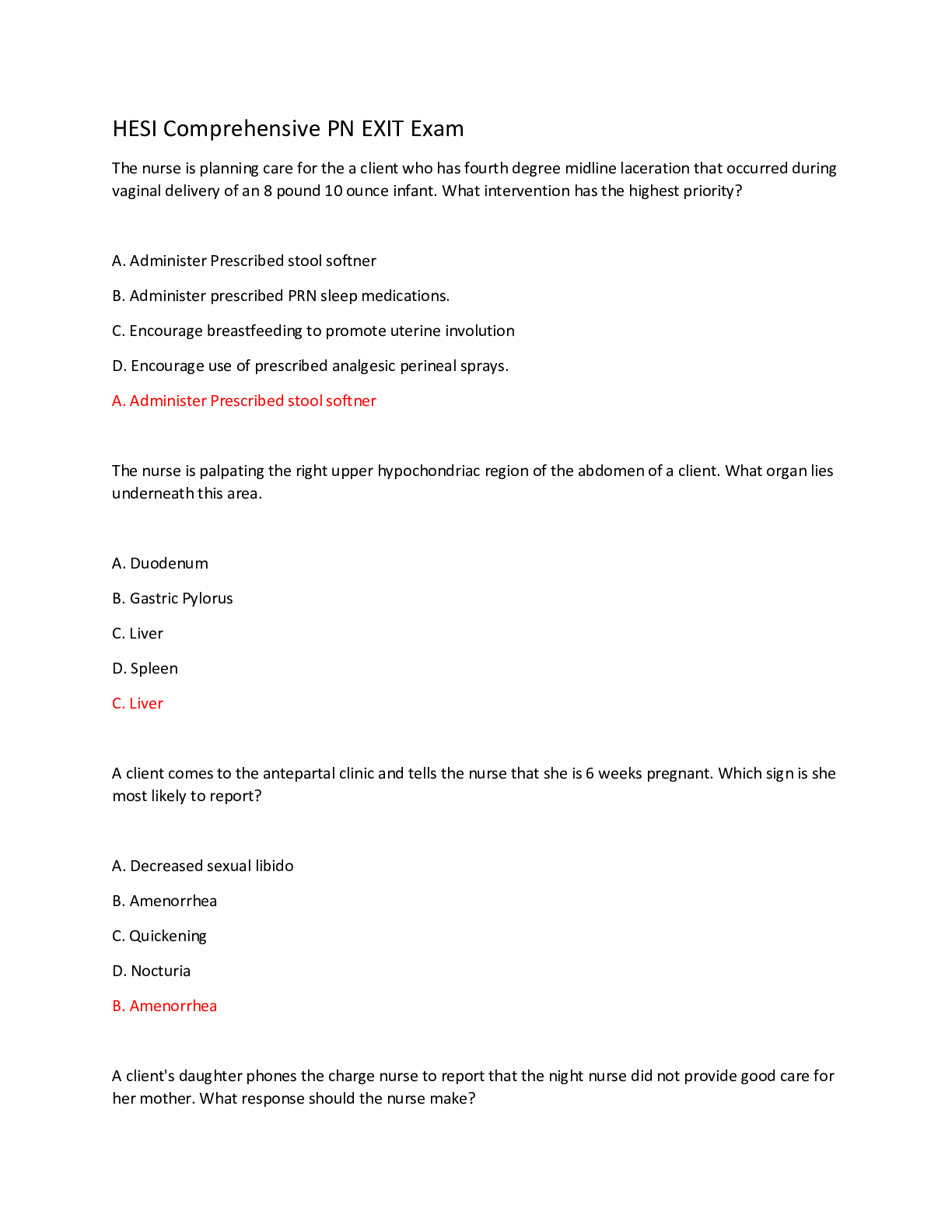
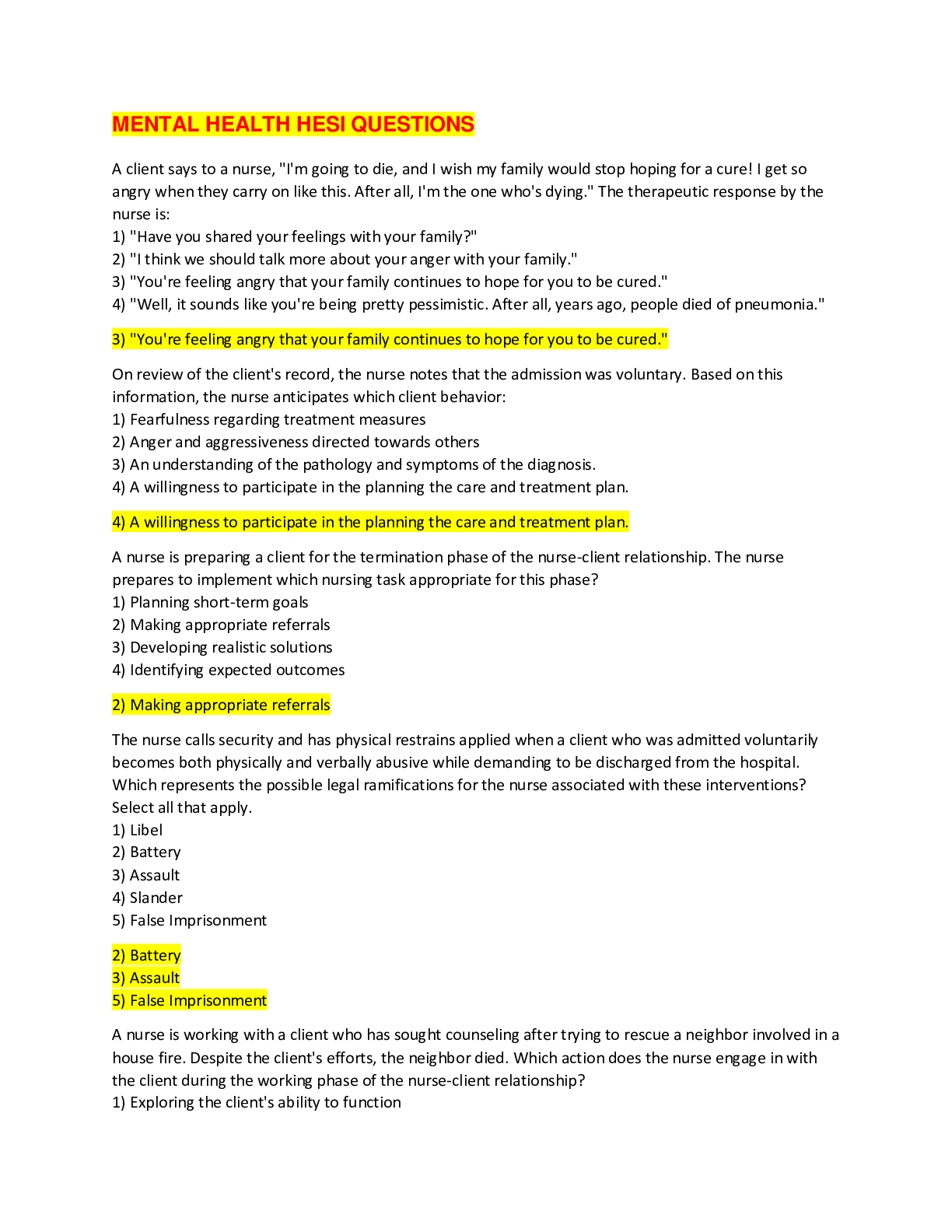

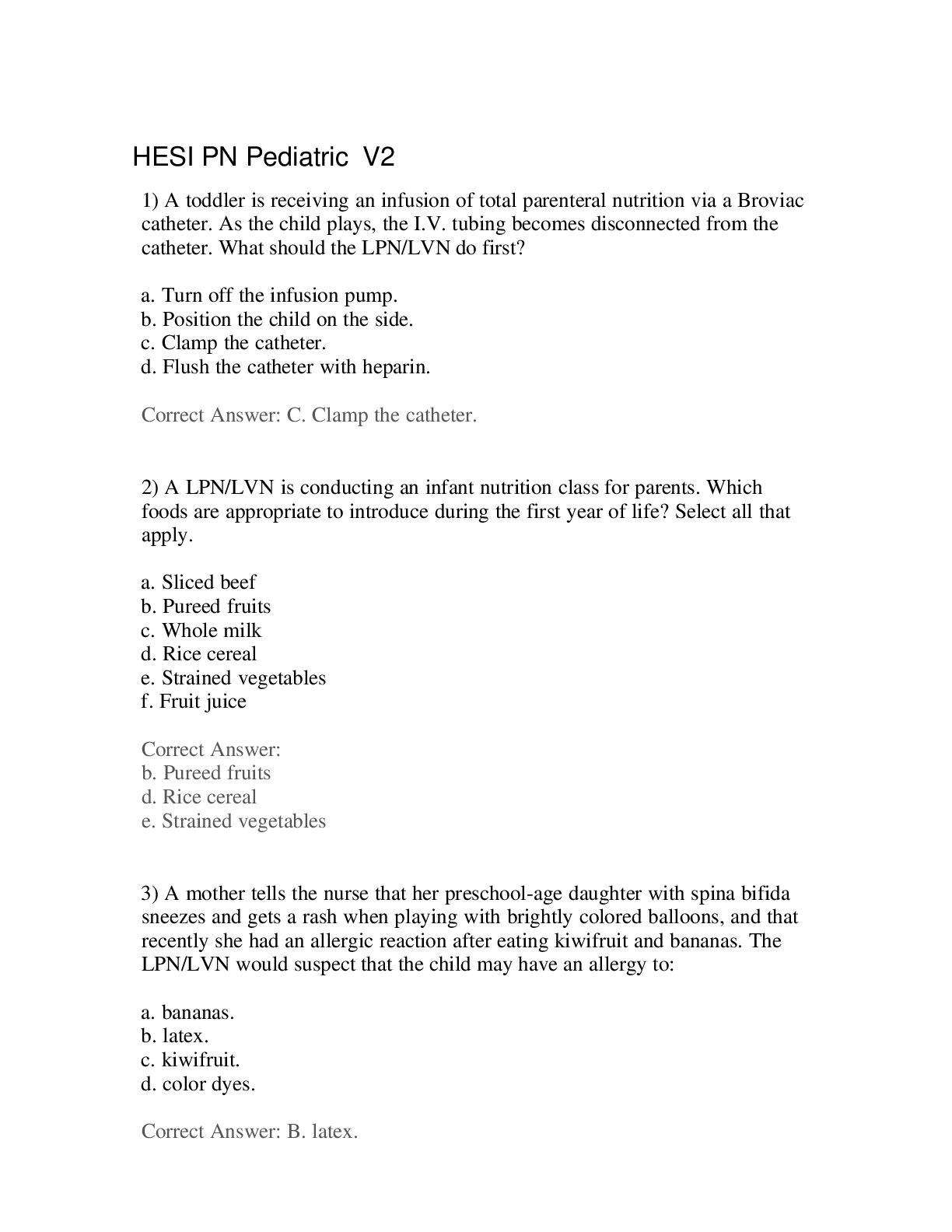
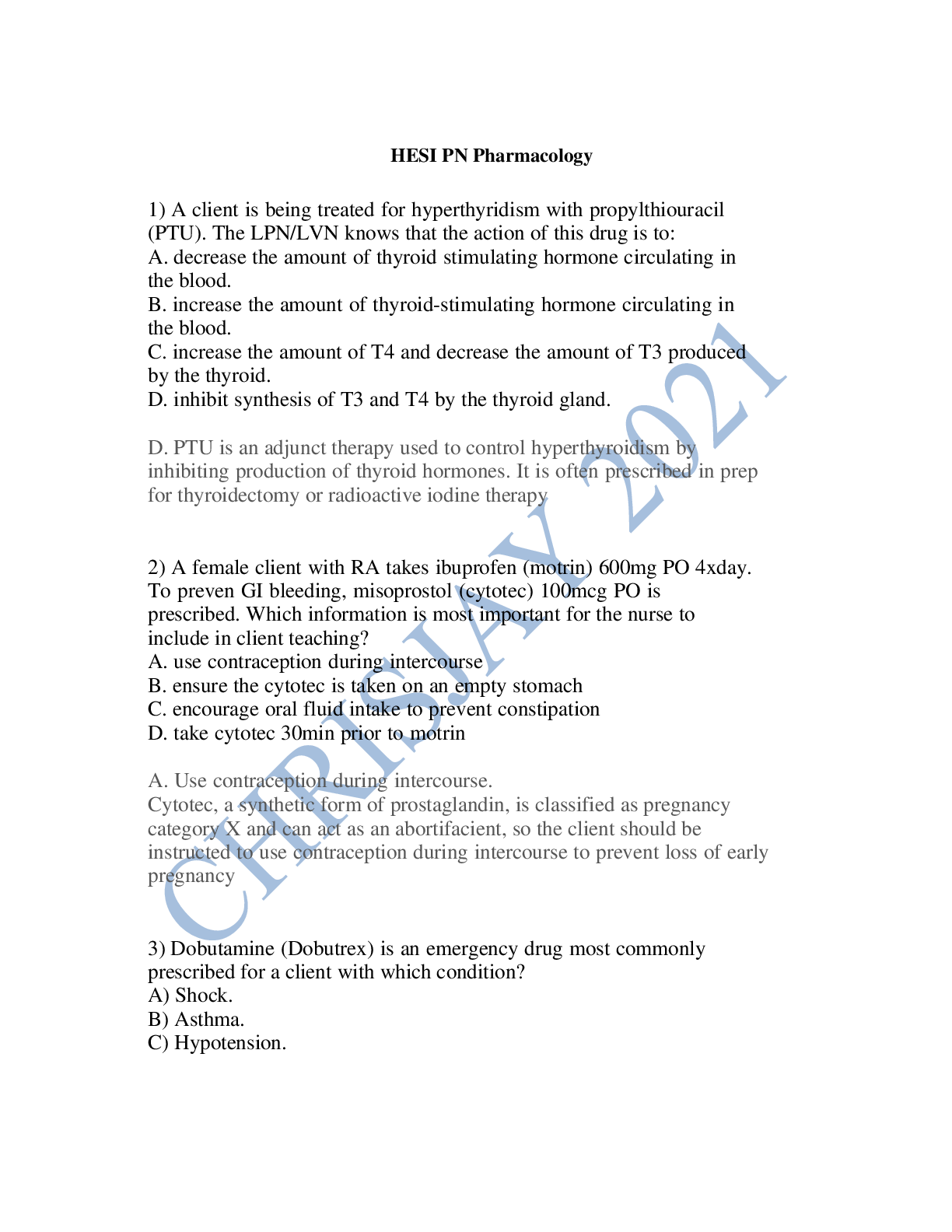
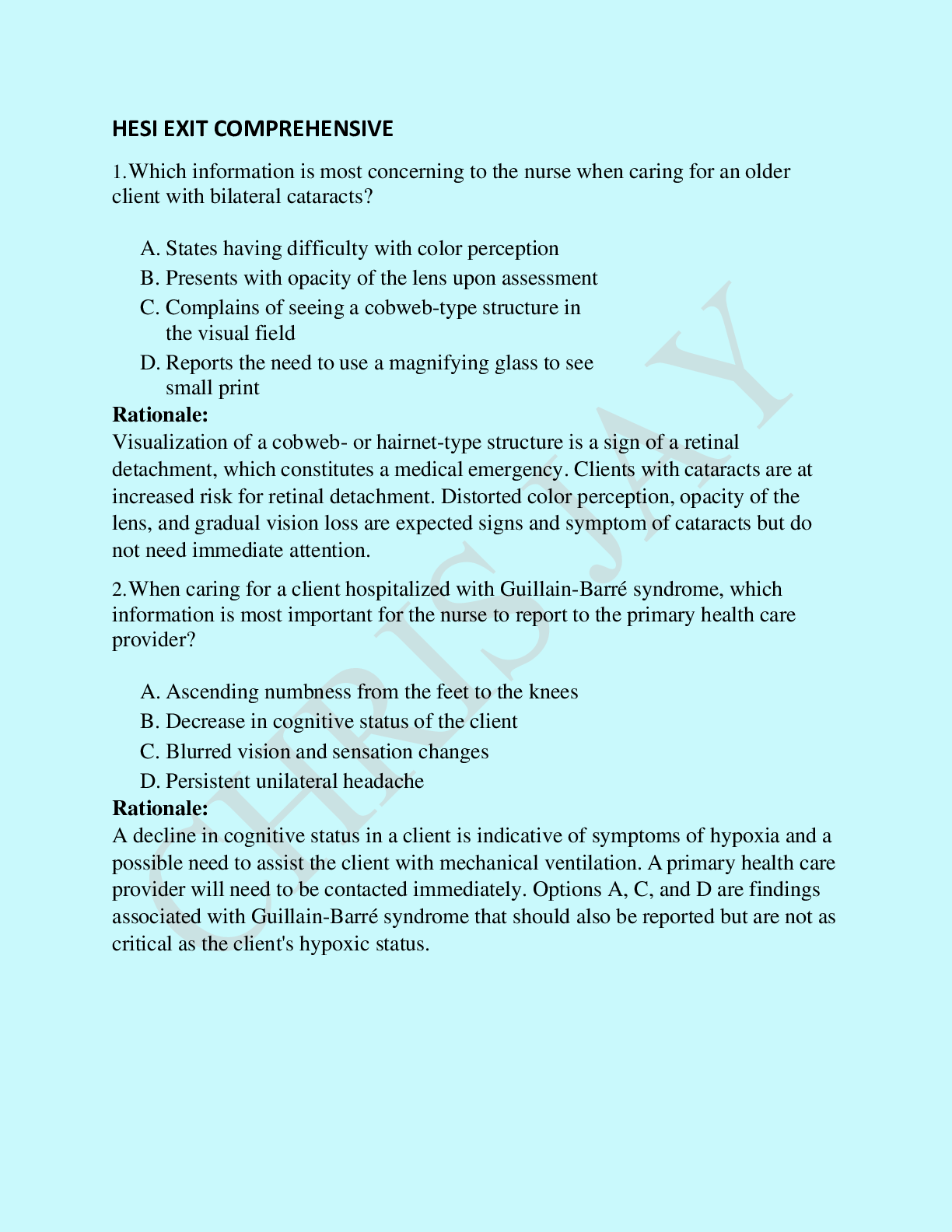
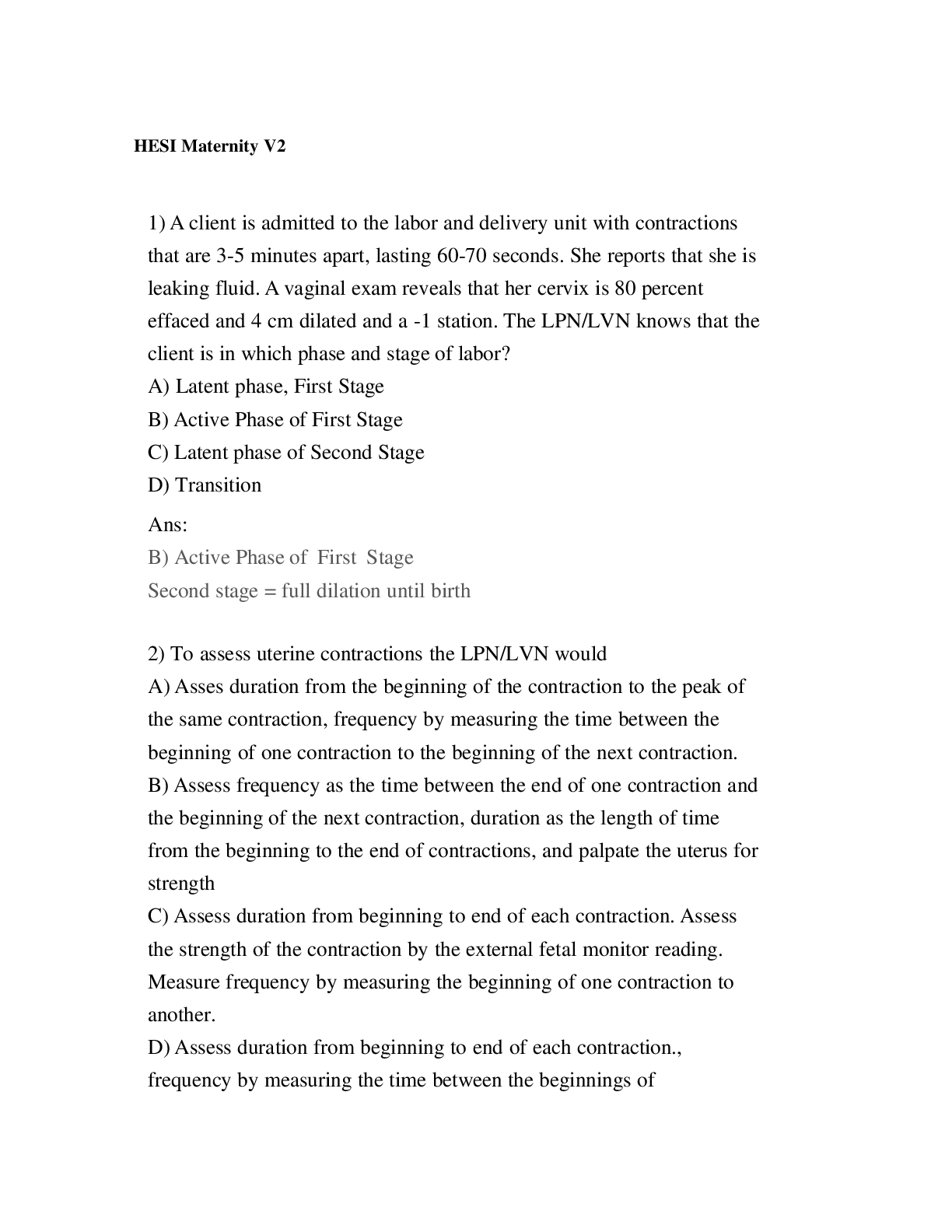
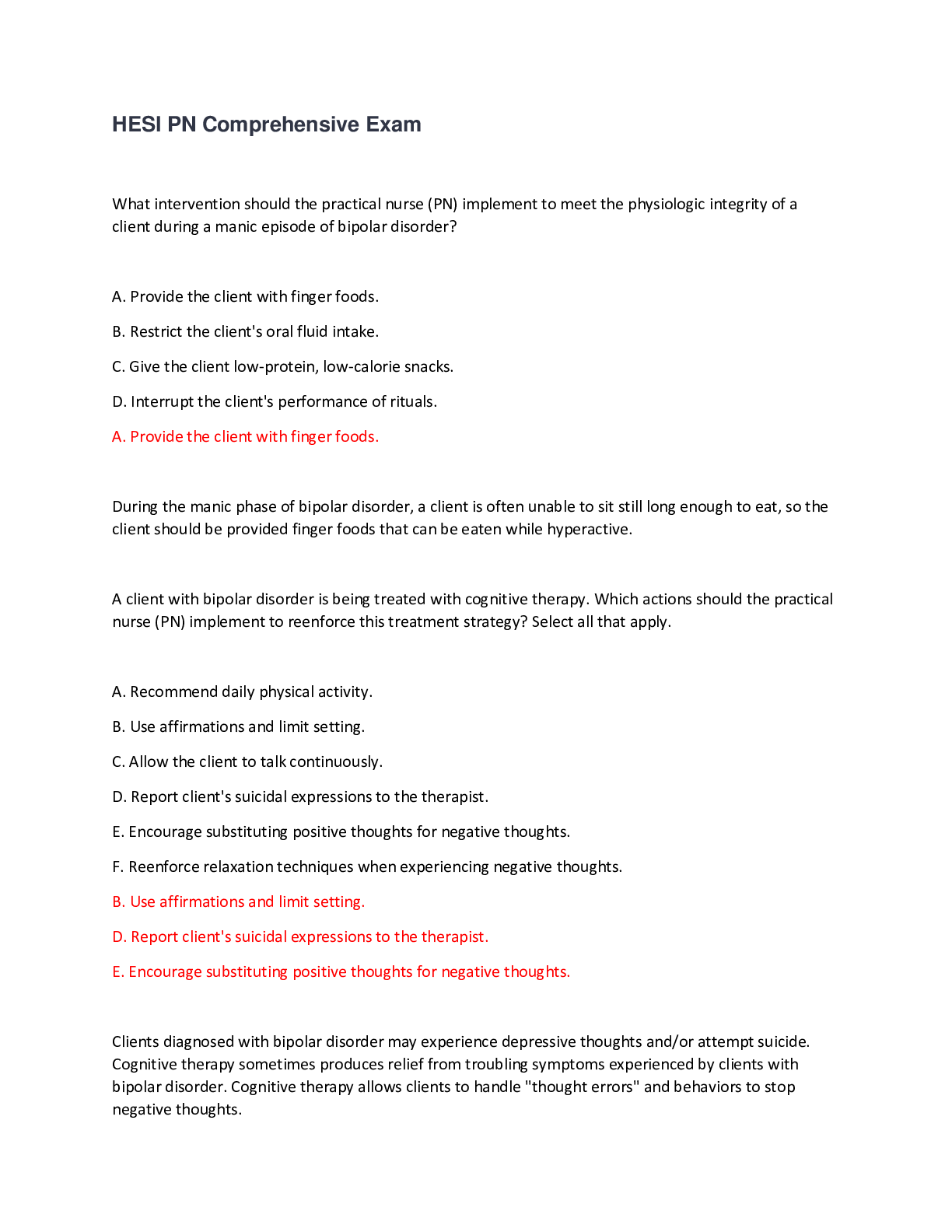
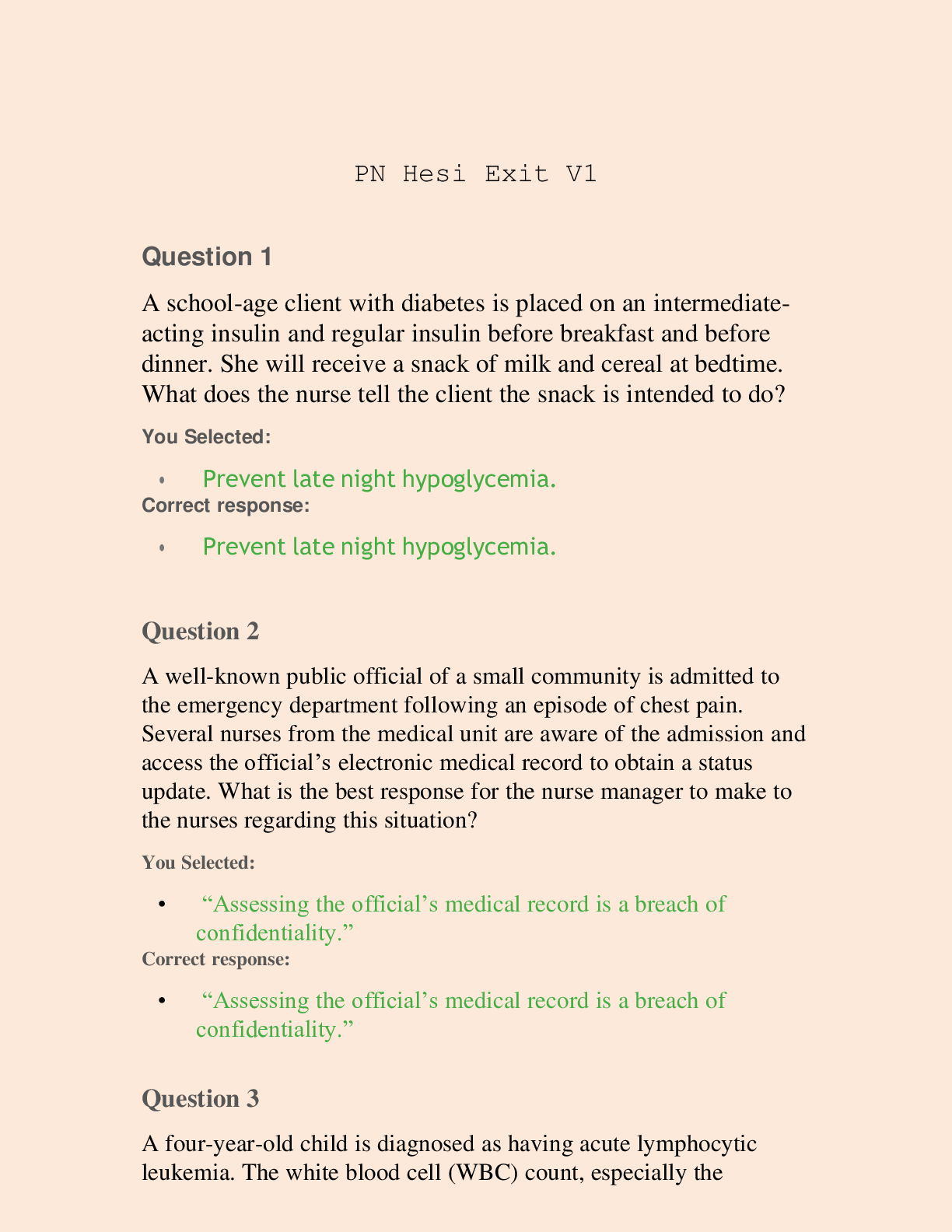
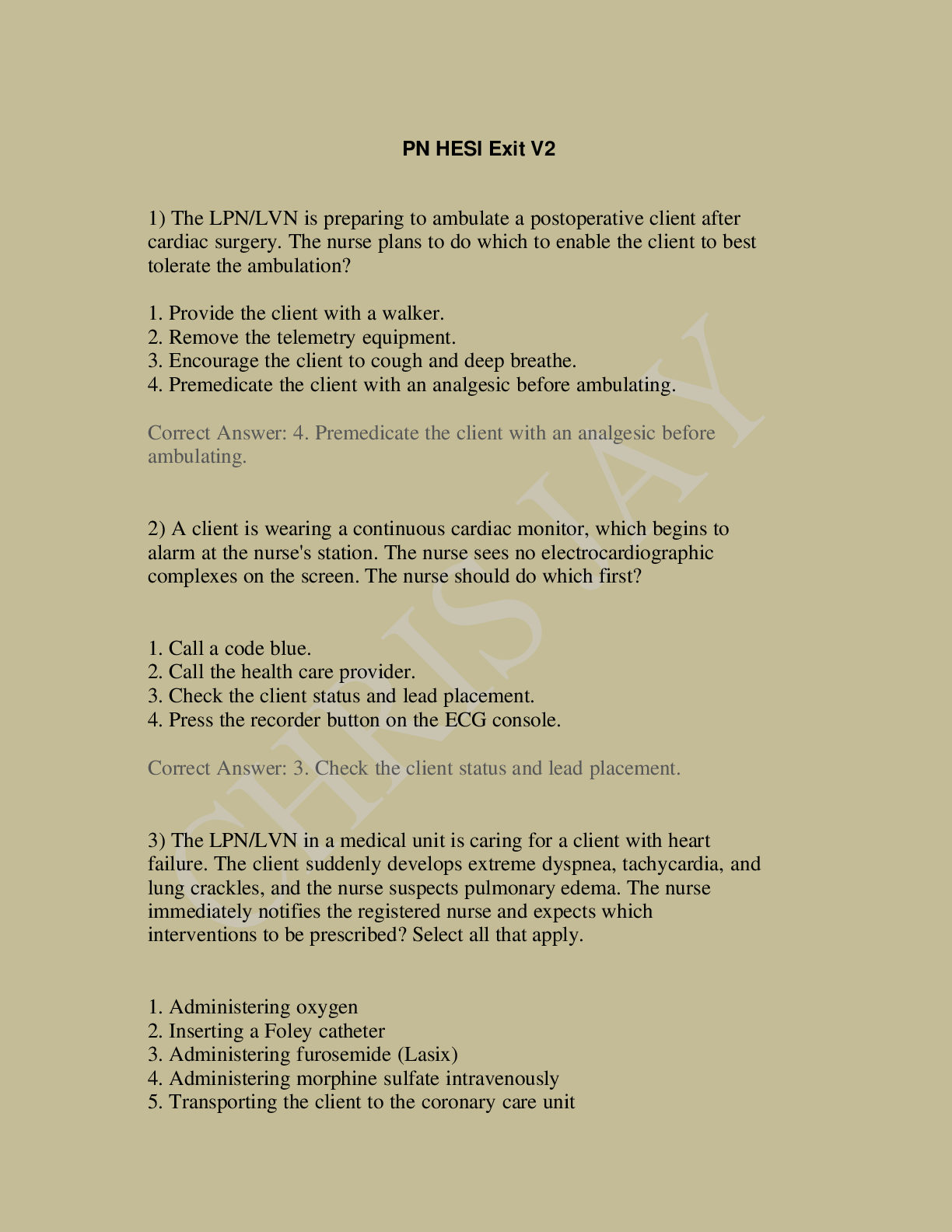



.png)
